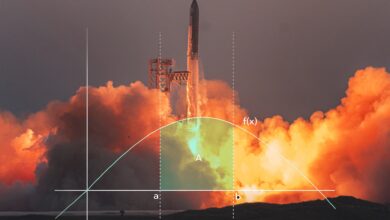
When it comes to planet formation, astronomers refer to the “bottom-up” definition of Cassandra Hall, an astronomer at the Center for Simulation Physics at the University of Georgia: The swirling gas and dust around a young star slowly accumulates over millions of years, and gravity pulls this material into It turns into a spherical mass.
However, based on the findings of Dr. Hall and his colleagues, published this month in the journal Nature, the above scenario could be more complicated. In a star system 508 light-years away, researchers have found conditions that support an alternative “top-down” approach to planet formation. There, fertile material orbiting a young star rapidly collapses to form a planet. This mechanism, called gravitational instability, could explain the existence of mysterious massive worlds in the strange orbits of relatively young stars.
Cosmic matter orbiting baby stars has a high potential to form planets. This material is called a protoplanetary disk, its rotation is influenced by the gravity of the host star; But if the disk grows large enough, it can become overwhelmed by its own gravity, destabilizing the young star system. The dense parts of the disk form spiral arms similar to the swirling clouds in a tornado. According to Jesse Speedy, a graduate student at the University of Victoria in Canada, such a star resembles the eye of a storm.
The video below shows simulations of objects between five and 15 times the mass of Jupiter, formed through gravitational instability in a very young disk.
According to Speedy, if the arms of the young disk absorb enough material, they can form clumps that later collapse and become gas giant planets. Unlike a bottom-up method like nuclear accretion, which takes millions of years, this happens in just a few hundred years. Speedy continues:
These two theories competed with each other in astronomy for a while; But for the first time, we were able to reach definitive evidence that a gravitational instability path is possible.
Gravitationally unstable disks can be the birthplace of massive planets, far from their host stars, and thus the core accretion method is not very suitable for these planets. In 2022, astronomers published a report of the discovery of a protoplanet with 9 times the mass of the planet Jupiter around the star Abe Chariot, which is not more than four million years old. The said object was located at a distance of 13.8 billion kilometers from its star, which is twice the distance between our Sun and Pluto.









